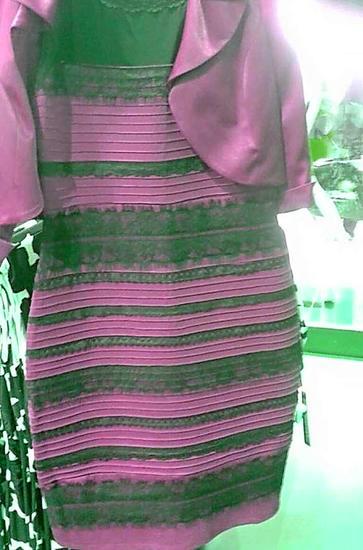The reason behind the confusion, it is now known, is the photograph's overall bluish and yellowish coloring. A team of psychologists set out to experimentally test how it happened.
The team discovered that all test subjects basically perceived similar color shades, only varying in lightness. The perception of colors ranges from a very light blue (almost white) to bright mid blue, from yellow and gold to an intense and dark brown (almost black). And yet, the transitions are fluid: Neither the people who view the dress as white and gold nor those perceiving it as black and blue constitute a homogenous group. However, the perceived colors have something in common: They all are part of the so-called daylight locus; depending on the position of the sun during the course of the day, daylight tends to be rather bluish (at noon) or rather yellowish (in the morning and in the evening).

#TheDress if it were red. Montage: Gegenfurtner et al. / Current Biology 2015
Usually, people are able to unconsciously filter the effect of bluish or yellowish light with the result that everyone perceives the same colors. To do so, we require reference points, thus colors, which are located outside the daylight locus. However, green or red features are completely missing in the case of #TheDress, as it was called in social networks. Therefore, the photograph does not provide relevant information on the scene's luminance levels.
"This would not have happened with a red dress," concludes Prof. Dr. Karl Gegenfurtner, department of psychology at Justus Liebig University Giessen in their Current Biology article. "The perceived hue in one of the groups of observers is related to the fact that a white dress was exposed to cool bluish light. Just as well it could be a blue dress which was overexposed by warm light."
The fact that it is a blue/black dress is a matter of minor importance. The observers do not consciously decide for one version or the other.
Various studies have proven that people have difficulties perceiving colors along the daylight locus correctly. Test subjects are for instance rarely able to set a completely neutral grey on the screen without tending to a slightly bluish or yellowish tinge. Deviations concerning red or green tendencies on the contrary hardly ever occur, which, in turn, explains why a red and green colouring of the dress on a screen by the team of authors has not led to any perceptual disagreements among the test subjects.




Comments